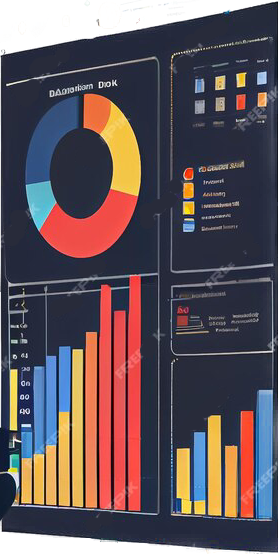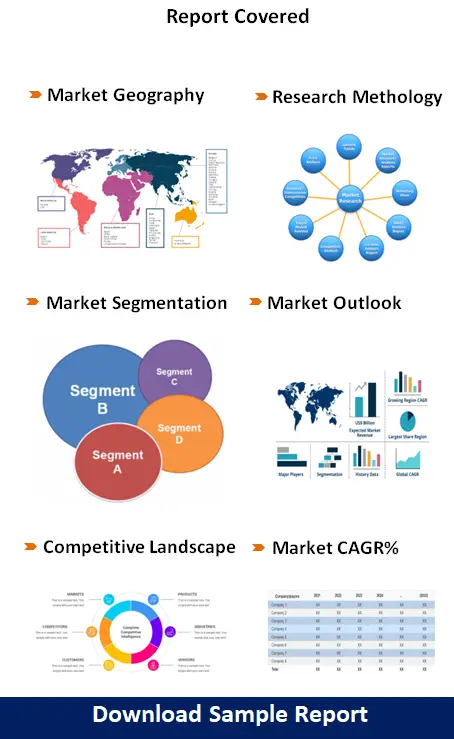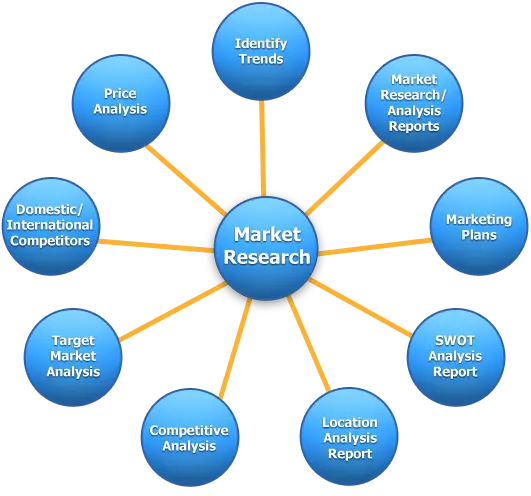Telescope and Hand-held Later Rangefinder Market Growth CAGR Overview
According to research by Infinitive Data Research, the global Telescope and Hand-held Later Rangefinder Market size was valued at USD 584 Mln (Million) in 2024 and is Calculated to reach USD 984 Mln (Million) by the end of 2032, growing at an anticipated compound annual growth rate (CAGR) of 8.8% during the forecast period 2024 to 2032. This projected growth is driven by its increasing adoption across Food & Beverage industries such as Milk, Cultures, Enzymes, AdditivesThe market for telescopes and hand-held laser rangefinders is experiencing strong growth fueled by increasing consumer interest in advanced optical and measurement devices. Technological innovations in sensor precision, digital imaging, and laser accuracy have redefined product capabilities, elevating user experience for both professional and recreational applications. This sector benefits from sustained investments in research and development, which continually enhance product performance and broaden the range of applications. Manufacturers are leveraging advancements in electronics, miniaturization, and wireless technology to offer products that seamlessly combine portability with high precision.
The competitive landscape in this market is intensifying as both established optical manufacturers and emerging tech startups ramp up their innovative capacities. Growing demand across diverse sectors – ranging from outdoor recreation and astronomy to surveying and military applications – has driven companies to continuously refine product features and functionalities. The rapid evolution of consumer electronics technology is enabling the integration of sophisticated imaging systems and augmented reality overlays in telescopes and rangefinders. This shift in product capability not only enhances the user experience but also creates new revenue opportunities and stimulates market expansion.
Increasing consumer expectations for quality, portability, and multifunctionality are shaping the industry’s dynamics. Both professional users and enthusiasts demand devices that deliver precise measurements, reliable performance under varying conditions, and ease of use in the field. Manufacturers are dedicating significant efforts to enhance ergonomic design and battery longevity, while integrating smart features such as GPS coordination and digital connectivity. The collective improvement in these features is broadening the appeal of telescopes and hand-held laser rangefinders, thereby driving up demand in both consumer and industrial segments.
Market dynamics are further influenced by the growing importance of technological integration and cross-functional device capabilities. The convergence of traditional optical instruments with digital technologies has led to the emergence of hybrid devices that offer enhanced tracking, mapping, and data logging functionalities. This integration is supported by increased investment in technology partnerships and innovative research initiatives. As a result, manufacturers are not only meeting existing customer demands but are also spearheading new trends in device connectivity and interactive functionality, leading to an overall uplift in market confidence and growth.
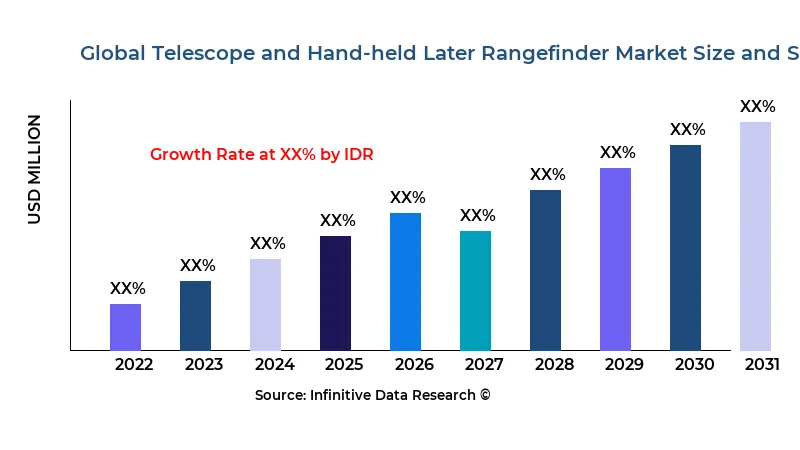
>>> Understand The Key Trends Shaping This Market:- Download PDF Sample
Telescope And Hand Held Later Rangefinder Market Growth Factors
Advancements in sensor technology and enhanced digital imaging capabilities are critical growth drivers in the telescope and laser rangefinder market. Manufacturers are investing in the development of high-resolution optics and robust laser measurement systems to offer precision instruments that cater to diverse professional and recreational applications. These technical improvements provide users with increased accuracy, reliability, and ease of use, making the devices indispensable in fields that require detailed measurement and observation. The continuous evolution of imaging technology is also enabling manufacturers to introduce products with superior clarity and enhanced processing capabilities.
Rapid adoption of outdoor recreational activities and the increasing popularity of astronomy are significant growth factors for this market. As consumers seek engaging ways to explore the natural world, products such as telescopes and rangefinders offer a unique combination of functionality and entertainment. This cultural shift toward adventure sports and hobbyist stargazing has spurred demand for high-performance optical instruments. In addition, professional applications in surveying, construction, and defense further contribute to market demand. Manufacturers are thus well poised to leverage these trends by tailoring their product offerings to meet varied consumer requirements.
The integration of digital interfaces and wireless connectivity features is another key factor contributing to market growth. Modern telescopes and laser rangefinders are being designed with enhanced software functionalities that allow real-time data analysis, mapping, and remote control. This digital transformation improves operational efficiency and user interaction, which in turn has boosted consumer confidence and broadened the use cases of these devices. As these products become increasingly integral to both leisure activities and professional operations, the combined emphasis on connectivity and technological sophistication is driving steady market expansion.
Increasing government investments in infrastructure and defense, coupled with a surge in technological research, are fostering a conducive environment for the advancement of optical instruments. Funding initiatives aimed at modernizing equipment and enhancing technological capabilities in various sectors are driving demand from institutional buyers. These public sector investments, alongside private market expansions, create a balanced ecosystem that supports both high-end professional-grade and consumer-level devices. As manufacturers capitalize on these opportunities, the market is witnessing significant innovations and broader applications, thereby securing long-term growth prospects.
Market Analysis By Competitors
- Chr. Hansen Holding (Denmark)
- Fonterra (New Zealand)
- DowDuPont
- DSM (Netherlands)
- ADM (US)
By Product Type
- Natural
- Processed
By Application
- Milk
- Cultures
- Enzymes
- Additives
>>> Understand The Key Trends Shaping This Market:- Understand The Key Trends Shaping This Market:-
Telescope And Hand Held Later Rangefinder Market Segment Analysis
Distribution Channel:
The distribution channel for telescopes and hand-held laser rangefinders has evolved from specialized optical and electronics stores to include a blend of high-end retail outlets, online marketplaces, and direct-to-consumer sales models. Distributors are increasingly adopting omnichannel strategies that allow customers to experience product demonstrations in physical stores while enjoying the convenience of online research and purchasing. Retail partnerships, combined with effective digital marketing campaigns, are driving increased accessibility for end users. This multi-faceted distribution approach ensures that both professional and hobbyist segments are well catered to, ultimately enhancing the market reach of high-performance optical instruments.
Compatibility:
Compatibility considerations are of critical importance in this market given the need for integration with various digital ecosystems and measurement tools. Manufacturers are designing telescopes and laser rangefinders to seamlessly interface with smartphones, tablets, and advanced computing devices for enhanced user experience and data connectivity. These devices often incorporate software integrations that allow for mapping, augmented reality, and real-time analysis. Their compatibility with existing technological infrastructures ensures ease of use and promotes widespread adoption among professionals and hobbyists alike. This focus on interoperability across hardware and digital platforms is a key component of the product development strategy within the industry, ensuring that devices meet diverse operational requirements.
Price:
Pricing in the optical instruments market is driven by a balance between technological sophistication and affordability. High-performance telescopes and rangefinders positioned in the professional segment often command premium prices owing to their advanced features and superior precision. However, there is also a significant segment of the market that addresses consumer-level demand, which features competitively priced devices with essential functionalities. Manufacturers employ pricing strategies that segment their product lines to cater to both high-end specialists and casual users. The competitive pricing landscape is further influenced by economies of scale in production and technological advancements that reduce overall manufacturing costs without compromising on performance or quality.
Product Type:
The product type segmentation in this market is primarily distinguished between traditional telescopes designed for detailed celestial observation and hybrid devices that combine laser rangefinding with advanced optical features. Manufacturers offer a spectrum of products ranging from manual, precision-tuned instruments ideal for professional surveys to compact, user-friendly devices suited for outdoor recreational use. This diversity in product types caters to various operational needs and consumer preferences. Advanced models often feature integrated digital display systems, data-logging capabilities, and connectivity options that set them apart in functionality. The broad array of products available ensures that the market can address both specialized industry requirements and mass-market consumer demand, thereby securing diverse revenue streams.
| REPORT ATTRIBUTES | DETAILS |
|---|---|
| Study Period |
2019-2032 |
| Base Year |
2023 |
| Forecast Period |
2024-2032 |
| Historical Period |
2019-2022 |
| Unit |
Value (USD Billion) |
| Key Companies Profiled |
Chr. Hansen Holding (Denmark), Fonterra (New Zealand), DowDuPont, DSM (Netherlands), ADM (US) |
| Segments Covered |
By Product |
| Customization Scope |
Free report customization (equivalent to up to 3 analyst working days) with purchase. Addition or alteration to country, regional and segment scope |
>>> Overview of Market Analysis:- Download PDF Sample
Telescope And Hand Held Later Rangefinder Market Regional Analysis
North America remains one of the most dynamic regions for telescopes and hand-held laser rangefinders, driven by a combination of high consumer interest in outdoor recreation and significant investments in industrial and defense applications. The presence of a mature technological infrastructure and widespread digital connectivity facilitates the adoption of advanced optical instruments. In addition, government programs focused on scientific research and educational initiatives help bolster market demand. The region's innovation-friendly environment continues to foster product development and market expansion, reinforcing North America’s role as a key market hub.
Europe showcases a strong market for precision optical instruments due to its rich history in scientific research, technology, and engineering. The region’s focus on quality standards and rigorous testing protocols ensures that product offerings maintain high performance and durability. Increasing investments in research and development, along with supportive regulatory frameworks, are driving the growth of telescopes and rangefinders. European consumers and professionals alike display a strong preference for devices that incorporate advanced digital functionalities while preserving traditional optical excellence, ensuring sustained market growth across the region.
The Asia-Pacific region is experiencing robust growth in this market segment, driven by rapid urbanization, technological adoption, and rising consumer interest in recreational astronomy and outdoor sports. Countries in this region are investing in modernizing their technological infrastructure and expanding production capabilities, which results in increased availability of high-performance optical instruments at competitive prices. Government support for science, technology, and defense initiatives further augments market demand. The combination of an expanding middle class, increased disposable income, and a surge in technology-driven innovations positions Asia-Pacific as a rapidly growing and highly competitive market.
Emerging markets in Latin America, the Middle East, and Africa are gradually adopting advanced optical instruments as both recreational and professional needs evolve. Although these regions may face challenges related to infrastructure and market penetration, strategic investments in technology and education are sparking progressive market shifts. Enhanced global trade networks and targeted marketing campaigns by leading manufacturers are helping to demystify high-tech devices among local populations. As awareness and accessibility improve, these regions are expected to register steady growth, offering promising long-term potential in both consumer and specialized segments.
global Telescope and Hand-held Later Rangefinder market revenue (usd million) comparison by players 2024-2032
| Company/players | 2021 | 2022 | 2023 | 2024 | ... | (2032) |
|---|---|---|---|---|---|---|
| Chr. Hansen Holding (Denmark) | XX | XX | XX | XX | XX | XX |
| Fonterra (New Zealand) | XX | XX | XX | XX | XX | XX |
| DowDuPont | XX | XX | XX | XX | XX | XX |
| DSM (Netherlands) | XX | XX | XX | XX | XX | XX |
| ADM (US) | XX | XX | XX | XX | XX | XX |
| Total | XX | XX | XX | XX | XX | XX |
global Telescope and Hand-held Later Rangefinder market revenue (usd million) comparison by product type 2024-2032
Product Type
2023
2024
...
2032
CAGR%(2024-32)
Natural
XX
XX
XX
XX
XX
Processed
XX
XX
XX
XX
XX
Total
XX
XX
XX
XX
XX
| Product Type | 2023 | 2024 | ... | 2032 | CAGR%(2024-32) |
|---|---|---|---|---|---|
| Natural | XX | XX | XX | XX | XX |
| Processed | XX | XX | XX | XX | XX |
| Total | XX | XX | XX | XX | XX |
global Telescope and Hand-held Later Rangefinder market revenue (usd million) comparison by application 2024-2032
Application
2023
2024
...
2032
CAGR%(2024-32)
Milk
XX
XX
XX
XX
XX
Cultures
XX
XX
XX
XX
XX
Enzymes
XX
XX
XX
XX
XX
Additives
XX
XX
XX
XX
XX
Total
XX
XX
XX
XX
XX
| Application | 2023 | 2024 | ... | 2032 | CAGR%(2024-32) |
|---|---|---|---|---|---|
| Milk | XX | XX | XX | XX | XX |
| Cultures | XX | XX | XX | XX | XX |
| Enzymes | XX | XX | XX | XX | XX |
| Additives | XX | XX | XX | XX | XX |
| Total | XX | XX | XX | XX | XX |
>>> Market Understand Through Graph And Chart:- Download PDF Sample
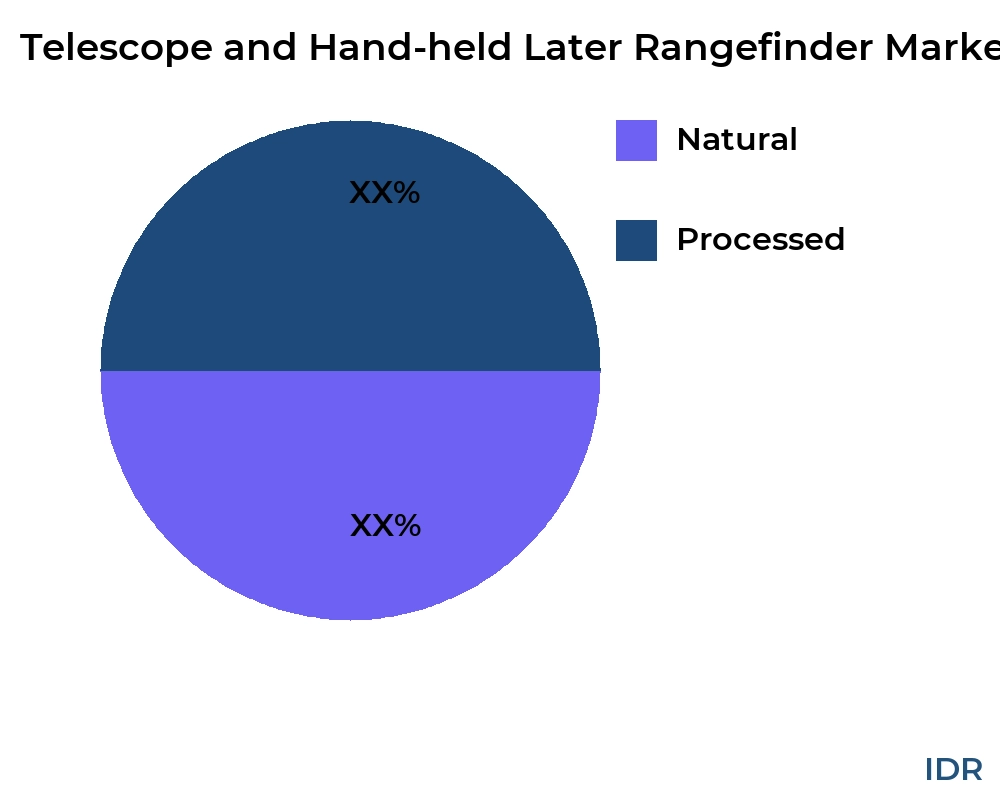

Telescope And Hand Held Later Rangefinder Market Competitive Insights
Competition in the optical instruments market is marked by rapid technological advancements and a strong drive to innovate among both established players and new entrants. Companies are strategically investing in integrated digital features and advanced sensor technologies to differentiate their products. The competitive landscape is characterized by a constant cycle of product upgrades and new launches, aimed at meeting the evolving needs of professional users and tech-savvy consumers. A combination of rigorous product testing, quality assurance, and technological enhancements is key to maintaining leadership in this fast-moving sector.
The market sees a vibrant mix of players from various regions and sectors, each leveraging its unique expertise to capture niche market segments. Established brands with a long-standing reputation for quality are now complemented by dynamic newcomers focusing on integrating wireless connectivity and digital interfaces. This interplay between traditional optical design and modern computing technology has driven product differentiation and increased overall market sophistication. Manufacturers who are quick to adopt emerging trends in software integration and device connectivity are finding increased market acceptance and growing consumer trust.
In response to shifting consumer preferences and rapid technological advancements, companies are increasingly forming strategic alliances to bolster R&D capabilities and expand market reach. Collaborative efforts between optics specialists and digital technology firms have resulted in hybrid products that seamlessly combine high-precision optics with advanced data capabilities. The competitive environment is thus characterized by synergistic partnerships that enable accelerated innovation and rapid market penetration. These alliances are a critical determinant in a company’s ability to offer comprehensive solutions that address both performance and connectivity requirements across diverse applications.
As companies focus on capturing both consumer and professional market segments, differentiation through design innovation and multifunctional device capabilities has become paramount. Manufacturers are not only racing to offer enhanced performance but are also focusing on ease of use, portability, and aesthetic appeal. This multi-dimensional focus has intensified competition as companies seek to dominate various market segments simultaneously. The resulting dynamic is one in which ongoing investments in product innovation, customer service, and targeted marketing play essential roles in maintaining competitive advantage and market leadership.
Telescope And Hand Held Later Rangefinder Market Competitors
United States:
-
PrecisionOptics Inc.
-
LaserSight Technologies
-
VistaRange Instruments
-
AstroView Systems
-
RangeMaster Solutions
Germany:
-
OpticPlus GmbH
-
ClearSight Systems
-
LaserLine Technologies
-
VisionTech Instruments
-
FocusRange Solutions
Japan:
-
NipponOptic
-
LaserVision Japan
-
AstroTech Instruments
-
Rangefinder Innovations
-
PrecisionOptics Japan
China:
-
SinoOptics Inc.
-
LaserEdge Technologies
-
VisionMaster China
-
FocusLine Instruments
-
OpticFusion Solutions
United Kingdom:
-
BritOptic Systems
-
LaserFocus UK
-
RangeRight Instruments
-
AstroEdge Technologies
-
ClearView UK
France:
-
OptiqueTech Solutions
-
LaserVue France
-
RangePrecision
-
VisionInnov France
-
ClarityOptics
Telescope And Hand Held Later Rangefinder Market Top Competitors
PrecisionOptics Inc. (United States):
PrecisionOptics Inc. is a leading provider of advanced optical and laser measurement systems renowned for its precision and reliability. The company has built a solid reputation through decades of innovation in developing telescopes and laser rangefinders. Its products are well-regarded among professional surveyors and outdoor enthusiasts alike. Advanced digital integration and sensor technology lie at the core of its product line. The company maintains a strong R&D focus, consistently introducing enhanced features and smart connectivity solutions. Strategic partnerships with technology and engineering firms have boosted their competitive advantage. With a global distribution network, PrecisionOptics remains a trusted name in optical instruments. Its commitment to quality ensures long-term market leadership.-
LaserSight Technologies (United States):
LaserSight Technologies is recognized for its cutting-edge laser rangefinder systems that combine accuracy with ease of use. The company invests heavily in the development of innovative digital interfaces and high-resolution optics. Their products serve diverse applications ranging from military operations to recreational sports and surveying. LaserSight’s focus on integrating user-friendly software with robust hardware solutions has positioned it as a market favorite. The company continuously enhances its product functionality through advanced sensor calibration. Their forward-thinking approach and extensive market penetration are evident from their expanding global clientele. Strategic marketing initiatives and regular product upgrades have solidified LaserSight Technologies’ reputation as a pioneer in the field. The company’s persistent drive for innovation makes it a key competitor in today’s market. -
VistaRange Instruments (United States):
VistaRange Instruments has emerged as a prominent player in the industry, specializing in high-performance telescopes and hand-held rangefinders. Their products are celebrated for exceptional clarity, durability, and precise measurement capabilities. VistaRange places a significant emphasis on miniaturization without compromising on performance, meeting the diverse needs of both professionals and hobbyists. The company’s investment in next-generation digital imaging and data analysis sets them apart from competitors. With an efficient supply chain and robust distribution network, VistaRange Instruments ensures product availability across multiple regions. Continuous improvements in ergonomics and functionality have garnered a loyal customer base. Their innovative design philosophy and commitment to excellence underline their significant market presence. VistaRange’s ability to balance advanced features with user accessibility reinforces its industry standing. -
AstroView Systems (United States):
AstroView Systems is a highly regarded company known for offering versatile optical instruments that appeal to astronomy enthusiasts and precision engineers. Their telescopes feature cutting-edge imaging solutions designed for both deep-sky exploration and practical surveying. The company has successfully integrated laser measurement technology with advanced digital displays, providing an immersive user experience. AstroView Systems stands out due to its strong emphasis on innovation and high-quality manufacturing standards. Their commitment to continuous improvement is reflected in the frequent introduction of new models that are both reliable and user-friendly. Strategic investments in research ensure they remain at the forefront of technological advancements in optical instrumentation. Their holistic approach to design and functionality has cemented their leadership position. AstroView Systems’ blend of technological expertise and consumer focus drives sustained market growth. -
RangeMaster Solutions (United States):
RangeMaster Solutions is a market leader specializing in high-precision laser rangefinders that are widely used in construction, surveying, and outdoor recreation. The company’s products are characterized by their advanced measurement accuracy and rugged durability. RangeMaster invests significantly in digital integration technologies that enhance accuracy and offer real-time data processing. Their approach to product development prioritizes functionality and ease of operation, ensuring high user satisfaction. The company’s strategic focus on continuous product innovation and quality management has positioned it at the cutting edge of the optical instruments market. Robust research capabilities and a customer-centric approach enable them to adapt rapidly to emerging market trends. RangeMaster Solutions maintains a robust international presence through effective distribution channels. Their commitment to excellence drives their reputation as a dependable leader in the sector. -
OpticPlus GmbH (Germany):
OpticPlus GmbH is a reputable European company known for its innovative approach to designing high-quality telescopes and laser rangefinders. The firm integrates traditional optics with modern digital and laser technologies, resulting in products that are both reliable and versatile. Their commitment to precision engineering and continuous product upgrades has earned them a solid presence in the professional and consumer segments. Through robust R&D programs and strategic collaborations with technology experts, OpticPlus has built a strong market reputation. Their products are particularly popular among surveying professionals and outdoor enthusiasts in Europe. The company’s dynamic approach to innovation and quality control enables them to meet stringent performance standards. Their globally competitive product range and efficient distribution channels enhance their market position. OpticPlus GmbH is widely recognized for its excellence and customer-focused innovation. -
ClearSight Systems (Germany):
ClearSight Systems is known for delivering high-caliber laser rangefinding devices that combine precision with exceptional build quality. The company focuses on developing optical instruments that are both user-friendly and engineered for accuracy in complex measurements. Their commitment to integrating digital enhancements and smart calibration techniques has established them as a trailblazer in the competitive European market. ClearSight Systems leverages extensive research and collaboration with academic institutions to maintain its innovation edge. Their products are highly valued in professional surveying and defense applications. The company’s attention to detail in design and manufacturing results in devices that offer remarkable clarity and durability. Through strategic product enhancements and an extensive service network, ClearSight Systems consistently meets the evolving demands of its customers. Their emphasis on technological excellence and sustained quality supports their long-term market leadership. -
VisionTech Instruments (Germany):
VisionTech Instruments is recognized for its high-performance optical solutions which include a range of telescopes and hand-held laser rangefinders. The company combines advanced optics with innovative electronics to deliver precise measurement tools. VisionTech’s products are engineered for versatility, catering to both scientific research and recreational activities. Their strong focus on quality control and technological innovation has enabled them to build a solid reputation in the competitive European market. The company frequently collaborates on international R&D projects, thereby ensuring that their product offerings remain relevant and cutting-edge. VisionTech Instruments is dedicated to producing robust and reliable devices that meet rigorous performance standards. Their proactive approach to market trends has contributed to their expansion in global markets. VisionTech’s emphasis on precision and durability underscores its respected market status. -
NipponOptic (Japan):
NipponOptic is a leading Japanese firm that specializes in the development of innovative optical instruments for both leisure and professional use. The company’s products are distinguished by their advanced digital capabilities and highly precise measurement systems. NipponOptic blends traditional optical design with contemporary technologies to deliver reliable telescopes and rangefinders that meet the exacting needs of a discerning clientele. Their commitment to quality and continuous innovation drives their persistent market success. The company’s strategic emphasis on R&D has resulted in breakthrough products that offer enhanced performance and user experience. NipponOptic’s robust manufacturing processes and quality assurance protocols are integral to their reputation. Their presence in various global markets attests to their strong industry positioning. The firm remains a pioneer in the optical instruments space, continually pushing the boundaries of technological innovation. -
LaserVision Japan (Japan):
LaserVision Japan is well-known for its state-of-the-art laser rangefinders and telescopic devices that combine precision and durability. The company leverages advanced laser technology to produce instruments that cater to both industrial applications and consumer interests. Their focus on high-resolution imaging and digital connectivity ensures that their products are both reliable and technologically sophisticated. LaserVision Japan invests significantly in research and innovation, positioning it as a leader in the competitive Japanese market. They emphasize the integration of cutting-edge features such as data logging and wireless communication in their product lineup. Their stringent quality control protocols and customer-focused design philosophy have earned them a loyal following. The company's strategic market approach and robust global partnerships underpin its success. LaserVision Japan continues to pioneer innovations that drive the evolution of optical instruments, keeping it at the forefront of the industry.
The report provides a detailed analysis of the Telescope and Hand-held Later Rangefinder market across various regions, highlighting the unique market dynamics and growth opportunities in each region.
- US
- Canada
- Mexico
- UK
- Germany
- France
- Italy
- Russia
- Spain
- Switzerland
- Austria
- Belgium
- Rest of Europe
- China
- Japan
- South Korea
- Indonesia
- Vietnam
- Philippines
- Australia
- Thailand
- Singapore
- Rest of APAC
- UAE
- Saudi Arabia
- Egypt
- South Africa
- Israel
- Rest of MEA
- Brazil
- Argentina
- Rest of Latin America
>>> Need A Different Region Or Segment? Download PDF Sample
Key Takeaways
- The global Telescope and Hand-held Later Rangefinder market is expected to grow significantly from 2024 to 2032, driven by technological advancements, increasing demand, and government investments in urbanization.
- The market is characterized by a diverse range of manufacturers, product types, and applications, catering to different consumer needs and preferences.
- Regional insights highlight the unique market dynamics and growth opportunities in various regions, including North America, Europe, Asia-Pacific, Latin America, and the Middle East & Africa.
- The competitive landscape features key players who have created a dynamic and diverse market environment through collaborations, mergers and acquisitions, and innovative product developments.
- Market trends such as technological advancements, sustainability, customization, and digital transformation are shaping the growth and development of the Telescope and Hand-held Later Rangefinder market.
- Despite the positive outlook, the market faces challenges such as regulatory compliance, high initial investment costs, and economic uncertainties.
- The report provides comprehensive coverage of market size, market share, growth factors, and strategic insights to help businesses navigate the dynamic Telescope and Hand-held Later Rangefinder market and achieve long-term success.
By leveraging the information provided in this report, businesses can develop effective strategies, address market challenges, and capitalize on growth opportunities to ensure sustainable growth and long-term success in the global Telescope and Hand-held Later Rangefinder market.
- Introduction
- Objectives of the Study
- Market Definition
- Research Scope
- Currency
- Key Target Audience
- Research Methodology and Assumptions
- Executive Summary
- Premium Insights
- Porter’s Five Forces Analysis
- Value Chain Analysis
- Top Investment Pockets
- Industry Trends
- Market Dynamics
- Market Evaluation
- Drivers
- Restraints
- Opportunities
- Challenges
- Global Telescope and Hand-held Later Rangefinder Market Analysis and Projection, By Companies
- Segment Overview
- Chr. Hansen Holding (Denmark)
- Fonterra (New Zealand)
- DowDuPont
- DSM (Netherlands)
- ADM (US)
- Global Telescope and Hand-held Later Rangefinder Market Analysis and Projection, By Type
- Segment Overview
- Natural
- Processed
- Global Telescope and Hand-held Later Rangefinder Market Analysis and Projection, By Application
- Segment Overview
- Milk
- Cultures
- Enzymes
- Additives
- Global Telescope and Hand-held Later Rangefinder Market Analysis and Projection, By Regional Analysis
- North America
- US
- Canada
- Mexico
- Europe
- UK
- Germany
- France
- Italy
- Russia
- Spain
- Switzerland
- Austria
- Belgium
- Rest of Europe
- Asia Pacific
- China
- Japan
- South Korea
- Indonesia
- Vietnam
- Philippines
- Australia
- Thailand
- Singapore
- Rest of APAC
- Middle East
- UAE
- Saudi Arabia
- Egypt
- South Africa
- Israel
- Rest of MEA
- Latin America
- Brazil
- Argentina
- Rest of Latin America
- Global Telescope and Hand-held Later Rangefinder Market-Competitive Landscape
- Overview
- Market Share of Key Players in the Telescope and Hand-held Later Rangefinder Market
- Global Company Market Share
- North America Company Market Share
- Europe Company Market Share
- APAC Company Market Share
- Competitive Situations and Trends
- Coverage Launches and Developments
- Partnerships, Collaborations, and Agreements
- Mergers & Acquisitions
- Expansions
- Company Profiles
- Chr. Hansen Holding (Denmark)
- Business Overview
- Company Snapshot
- Company Market Share Analysis
- Company Coverage Portfolio
- Recent Developments
- SWOT Analysis
- Fonterra (New Zealand)
- Business Overview
- Company Snapshot
- Company Market Share Analysis
- Company Coverage Portfolio
- Recent Developments
- SWOT Analysis
- DowDuPont
- Business Overview
- Company Snapshot
- Company Market Share Analysis
- Company Coverage Portfolio
- Recent Developments
- SWOT Analysis
- DSM (Netherlands)
- Business Overview
- Company Snapshot
- Company Market Share Analysis
- Company Coverage Portfolio
- Recent Developments
- SWOT Analysis
- ADM (US)
- Business Overview
- Company Snapshot
- Company Market Share Analysis
- Company Coverage Portfolio
- Recent Developments
- SWOT Analysis
List of Table
- Drivers of Global Telescope and Hand-held Later Rangefinder Market: Impact Analysis
- Restraints of Global Telescope and Hand-held Later Rangefinder Market: Impact Analysis
- Global Telescope and Hand-held Later Rangefinder Market, By Technology, 2023-2032(USD Billion)
- global Natural, Telescope and Hand-held Later Rangefinder Market, By Region, 2023-2032(USD Billion)
- global Processed, Telescope and Hand-held Later Rangefinder Market, By Region, 2023-2032(USD Billion)
- global Milk, Telescope and Hand-held Later Rangefinder Market, By Region, 2023-2032(USD Billion)
- global Cultures, Telescope and Hand-held Later Rangefinder Market, By Region, 2023-2032(USD Billion)
- global Enzymes, Telescope and Hand-held Later Rangefinder Market, By Region, 2023-2032(USD Billion)
- global Additives, Telescope and Hand-held Later Rangefinder Market, By Region, 2023-2032(USD Billion)
List of Figures
- Global Telescope and Hand-held Later Rangefinder Market Segmentation
- Telescope and Hand-held Later Rangefinder Market: Research Methodology
- Market Size Estimation Methodology: Bottom-Up Approach
- Market Size Estimation Methodology: Top-down Approach
- Data Triangulation
- Porter’s Five Forces Analysis
- Value Chain Analysis
- Top investment pocket in the Telescope and Hand-held Later Rangefinder Market
- Top Winning Strategies, 2023-2032
- Top Winning Strategies, By Development, 2023-2032(%)
- Top Winning Strategies, By Company, 2023-2032
- Moderate Bargaining power of Buyers
- Moderate Bargaining power of Suppliers
- Moderate Bargaining power of New Entrants
- Low threat of Substitution
- High Competitive Rivalry
- Restraint and Drivers: Telescope and Hand-held Later Rangefinder Market
- Telescope and Hand-held Later Rangefinder Market Segmentation, By Technology
- Telescope and Hand-held Later Rangefinder Market For Live Attenuated, By Region, 2023-2033 ($ Billion)
- Global Telescope and Hand-held Later Rangefinder Market, By Technology, 2023-2032(USD Billion)
- global Natural, Telescope and Hand-held Later Rangefinder Market, By Region, 2023-2032(USD Billion)
- global Processed, Telescope and Hand-held Later Rangefinder Market, By Region, 2023-2032(USD Billion)
- global Milk, Telescope and Hand-held Later Rangefinder Market, By Region, 2023-2032(USD Billion)
- global Cultures, Telescope and Hand-held Later Rangefinder Market, By Region, 2023-2032(USD Billion)
- global Enzymes, Telescope and Hand-held Later Rangefinder Market, By Region, 2023-2032(USD Billion)
- global Additives, Telescope and Hand-held Later Rangefinder Market, By Region, 2023-2032(USD Billion)
- Chr. Hansen Holding (Denmark): Net Sales, 2023-2033 ($ Billion)
- Chr. Hansen Holding (Denmark): Revenue Share, By Segment, 2023 (%)
- Chr. Hansen Holding (Denmark): Revenue Share, By Region, 2023 (%)
- Fonterra (New Zealand): Net Sales, 2023-2033 ($ Billion)
- Fonterra (New Zealand): Revenue Share, By Segment, 2023 (%)
- Fonterra (New Zealand): Revenue Share, By Region, 2023 (%)
- DowDuPont: Net Sales, 2023-2033 ($ Billion)
- DowDuPont: Revenue Share, By Segment, 2023 (%)
- DowDuPont: Revenue Share, By Region, 2023 (%)
- DSM (Netherlands): Net Sales, 2023-2033 ($ Billion)
- DSM (Netherlands): Revenue Share, By Segment, 2023 (%)
- DSM (Netherlands): Revenue Share, By Region, 2023 (%)
- ADM (US): Net Sales, 2023-2033 ($ Billion)
- ADM (US): Revenue Share, By Segment, 2023 (%)
- ADM (US): Revenue Share, By Region, 2023 (%)
Infinitive Data Research provides comprehensive market research, offering in-depth market analysis to help companies understand their target market and industry competition. This research predicts the market acceptance of your brand and products, ensuring informed decision-making for business success.
Competitor Analysis in the Telescope and Hand-held Later Rangefinder Industry
Conducting a competitor analysis involves identifying competitors within the Telescope and Hand-held Later Rangefinder industry and studying their various marketing strategies. This comparative data allows you to assess your company's strengths and weaknesses relative to competitors, providing insights to enhance your market position.
Importance of Continuous Market Research
Consistently conducting market research is essential for minimizing risk at every stage of business operations. Telescope and Hand-held Later Rangefinder market research enables you to collect qualitative and quantitative data, which, when properly analyzed, leads to wise decisions that align with user and customer needs. Below are some crucial lessons learned through the Telescope and Hand-held Later Rangefinder market research process:
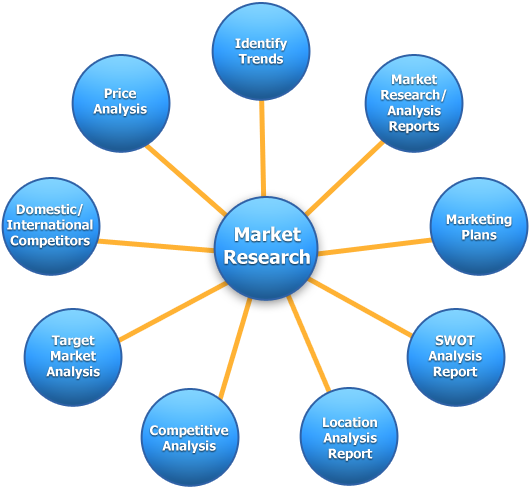
Key Dimensions of Telescope and Hand-held Later Rangefinder Market Analysis
- Trend and Pattern Identification: Analyzing data to spot market trends and patterns.
- Pricing Analysis: Assessing keyword pricing strategies.
- Actionable Insights: Implementing insights derived from data analysis.
- Market Potential: Evaluating the potential of the Telescope and Hand-held Later Rangefinder market.
- Competitor Analysis: Studying competitors' strategies and performance.
- Location Analysis: Assessing optimal locations for market penetration.
- Distribution Channels Analysis: Evaluating the effectiveness of distribution channels.
- Market Size and Growth Rate: Measuring market size and growth potential.
- Market Profitability: Assessing profitability prospects.
- Key Success Factors: Identifying critical factors for success.
- Cost Structure: Understanding the cost structure within the Telescope and Hand-held Later Rangefinder industry.
Target Audience for the Report
This report is valuable for a diverse audience, including:
- Telescope and Hand-held Later Rangefinder Market Manufacturers: To understand market dynamics and enhance production strategies.
- Investors and Financing Companies: To assess investment opportunities and risks.
- Telescope and Hand-held Later Rangefinder Market Suppliers: To identify market demands and supply chain efficiencies.
Necessity of the Report
Making Crucial Business Decisions
Understanding the Telescope and Hand-held Later Rangefinder market, competition, and industry landscape is vital for making informed business decisions. Without current and relevant market research, decisions may be based on outdated or irrelevant information, potentially harming the business.
Securing Investment Funds
Attracting investors requires demonstrating thorough market research. Investors need assurance that you understand the sector, current and potential competition, and whether your idea addresses a market need.
Identifying New Business Opportunities
Telescope and Hand-held Later Rangefinder market research goes beyond understanding trends and consumer behavior. It identifies new revenue streams and opportunities for business pivots. These insights can lead to strategic changes in the business model, promoting growth and adapting to market challenges.
Avoiding Business Failures
Market research also plays a crucial role in risk mitigation. It can reveal when not to pursue certain actions, saving the company from potential losses in revenue, brand image, and more. This proactive approach is often overlooked but is essential for long-term success.
Conclusion
Infinitive Data Research's comprehensive Telescope and Hand-held Later Rangefinder market research provides critical insights for making solid business decisions, securing investments, identifying new opportunities, and avoiding potential failures. Understanding market dynamics through continuous research ensures your company remains competitive and thrives in the Telescope and Hand-held Later Rangefinder industry.

